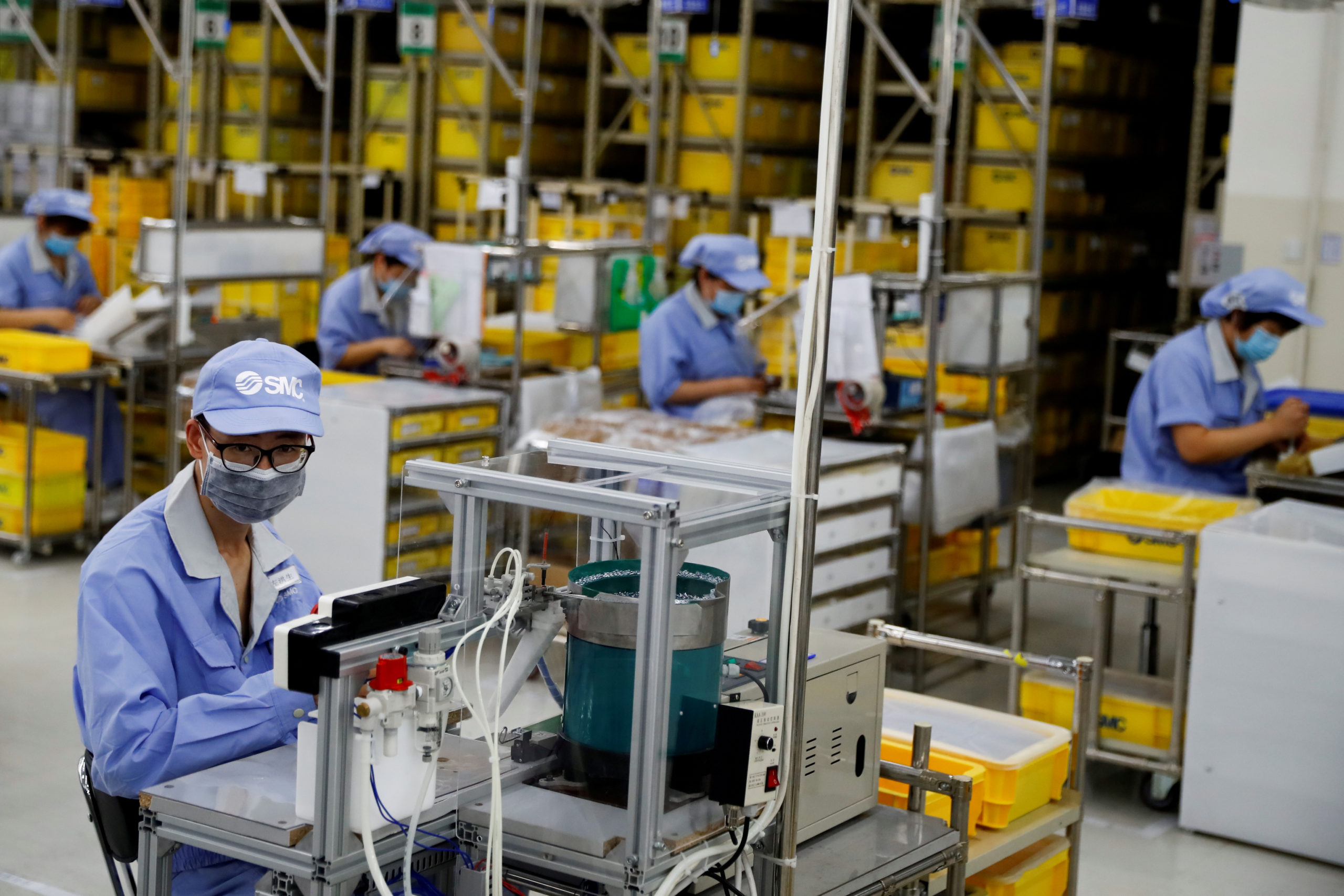Asia’s factories sustain expansion but supply squeeze dims outlook

FILE PHOTO: Employees wearing face masks work at a factory of the component maker SMC during a government organised tour of its facility following the outbreak of the coronavirus disease (COVID-19), in Beijing, China May 13, 2020. REUTERS/Thomas Peter
TOKYO — Asia’s factory activity continued to expand in May thanks to an ongoing recovery in global demand, surveys showed on Tuesday, though rising raw material costs and supply chain constraints clouded the outlook.
A spike in COVID-19 infections in some countries could disrupt supply chains, posing a headache for manufacturers and weighing on Asia’s export-driven recovery, analysts say.
Japan and South Korea saw expansions in factory activity moderate in May, purchasing managers’ indexes (PMI) showed on Tuesday, underscoring the fragile nature of their recoveries.
“A spread of new variants is already having a negative impact on supply chains. If this situation persists, it would hit Asian manufacturers that had been scrambling to diversify supply chains out of China,” said Toru Nishihama, chief economist at Dai-ichi Life Research Institute.
“Asia’s recovery has been driven more by external than domestic demand. If companies have trouble exporting enough goods, that bodes ill for the region’s economies,” he said.
Article continues after this advertisementChina’s factory activity expanded at the fastest pace this year in May on solid demand at home and overseas, though sharp rises in input prices and strains in supply chains crimped some firms’ production, a survey showed on Tuesday.
Article continues after this advertisementThe Caixin/Markit Manufacturing PMI, which focuses on smaller firms, rose to 52.0 last month, the highest since December and inching up from April’s 51.9.
The survey followed China’s official PMI on Monday, which showed factory activity in the world’s second-largest economy slowed slightly in May on surging raw material costs.
The effects of surging infections on manufacturing were most prominent in India where factory activity growth hit its lowest in 10 months, the PMI for the country showed.
India’s coronavirus outbreak has infected 28 million, killed more than 300,000 and forced many states to impose restrictions on economic activity.
Factories in Taiwan and Vietnam were so far holding up despite rising infections. Taiwan’s PMI stood at 62.0 in May, slowing from April but remaining well above the 50-mark that separates growth from contraction.
Vietnam’s PMI also stayed above 50 at 53.1 in May, though slowing from 54.7 in April.
Japan’s au Jibun Bank PMI dropped to a seasonally adjusted 53.0 in May from 53.6 in the previous month, but was higher than its flash reading of 52.5.
A global chip shortage and supply chain disruptions have hit car production, causing Japan’s output growth to miss expectations in April.
Japanese auto giants Toyota Motor and Honda Motor have suspended output in Malaysia due to lockdown measures imposed to combat the pandemic, Kyodo news agency reported on Tuesday.
Separate data released on Tuesday showed Japanese companies cut spending on plant and equipment for the fourth consecutive quarter in January-March, as the economy struggles to shake off the drag from the coronavirus pandemic.
South Korea’s PMI stood at 53.7 in May, slowing from April but extending growth into an eighth straight month although the pace of input price increases hit a 13-year high, the index showed.
The recovery in Asia’s fourth-largest economy remains robust with South Korean exports logging their sharpest expansion in 32 years in May, fuelled by stronger consumer demand globally as many economies start to reopen.